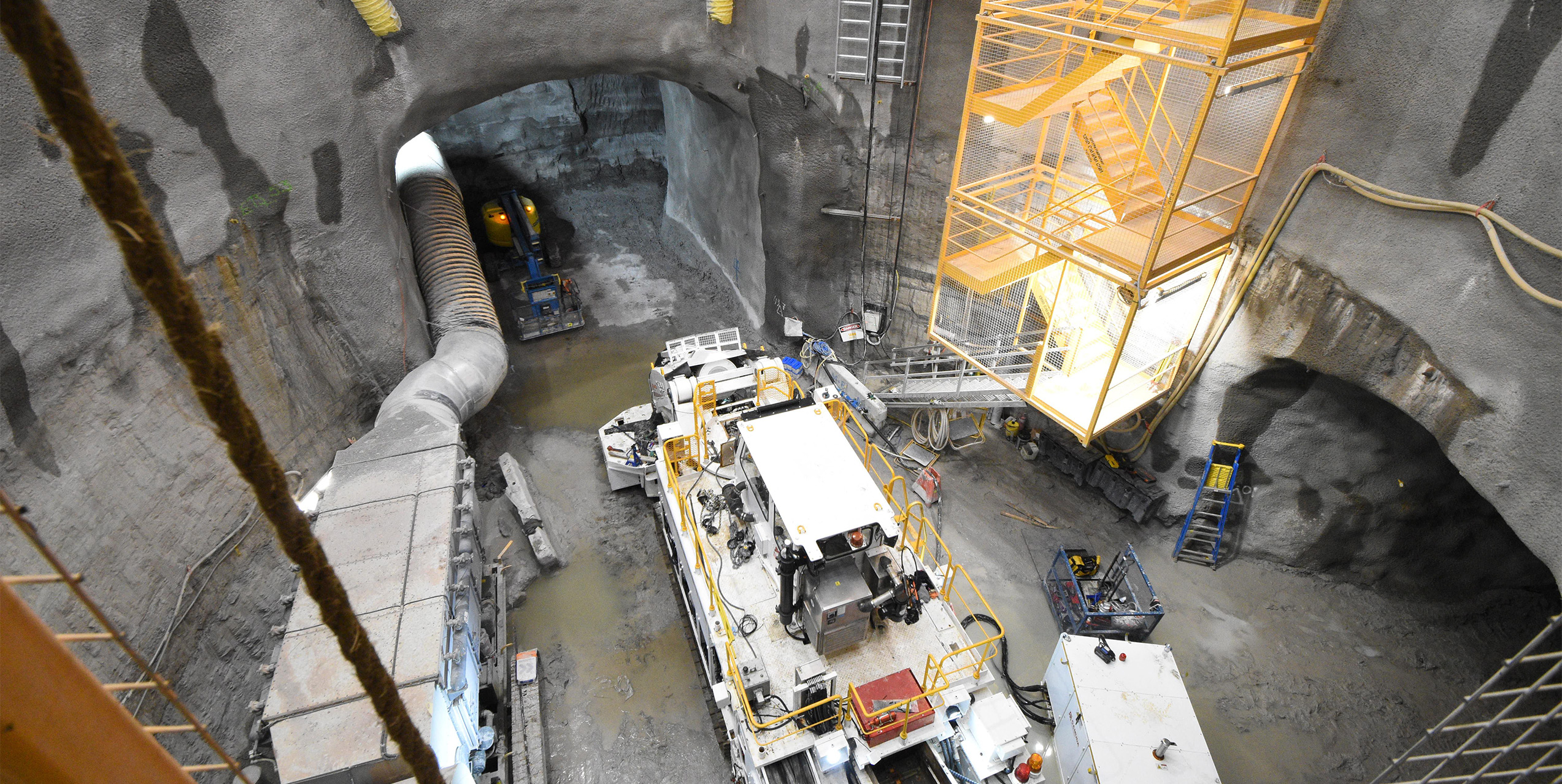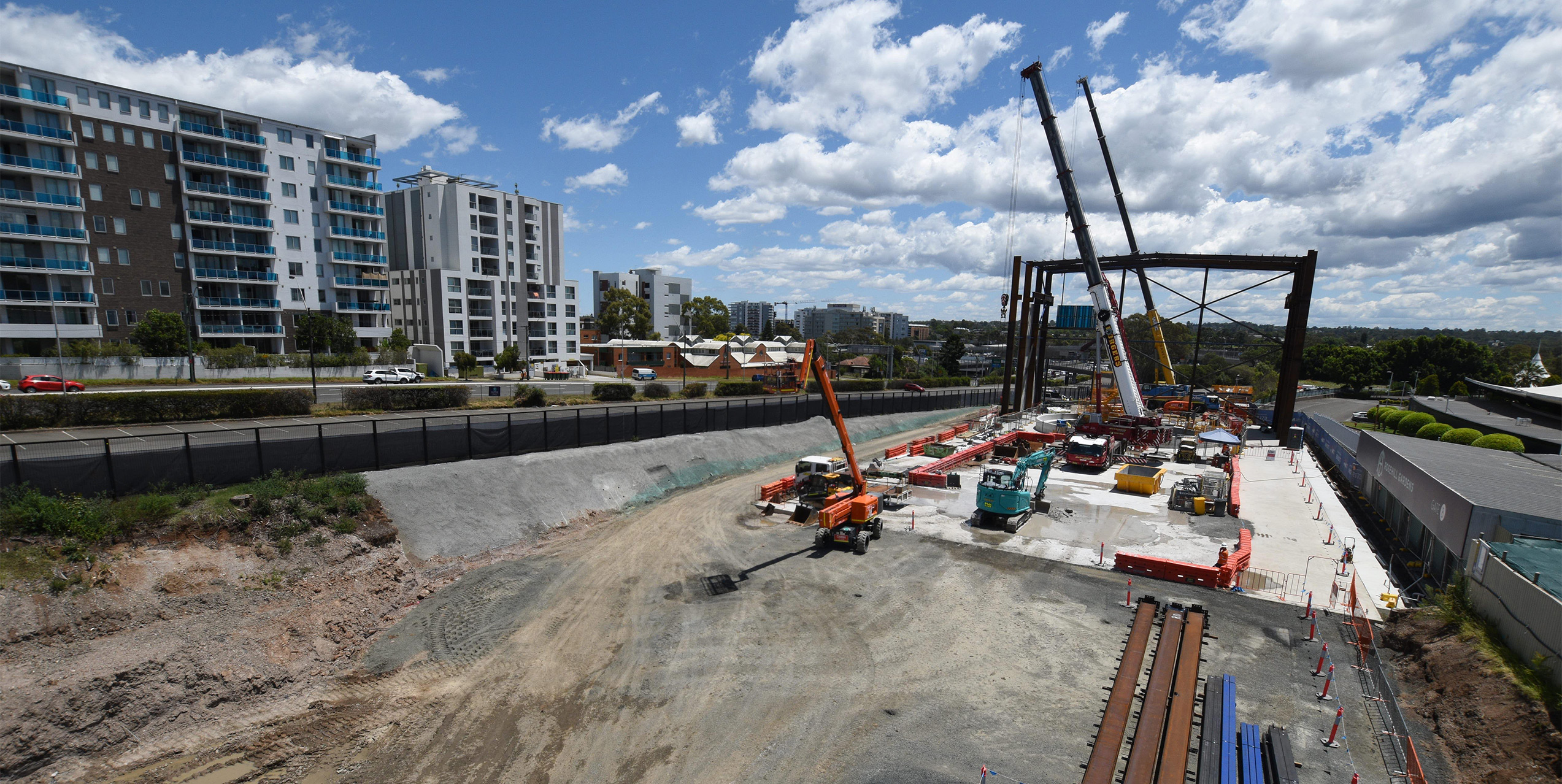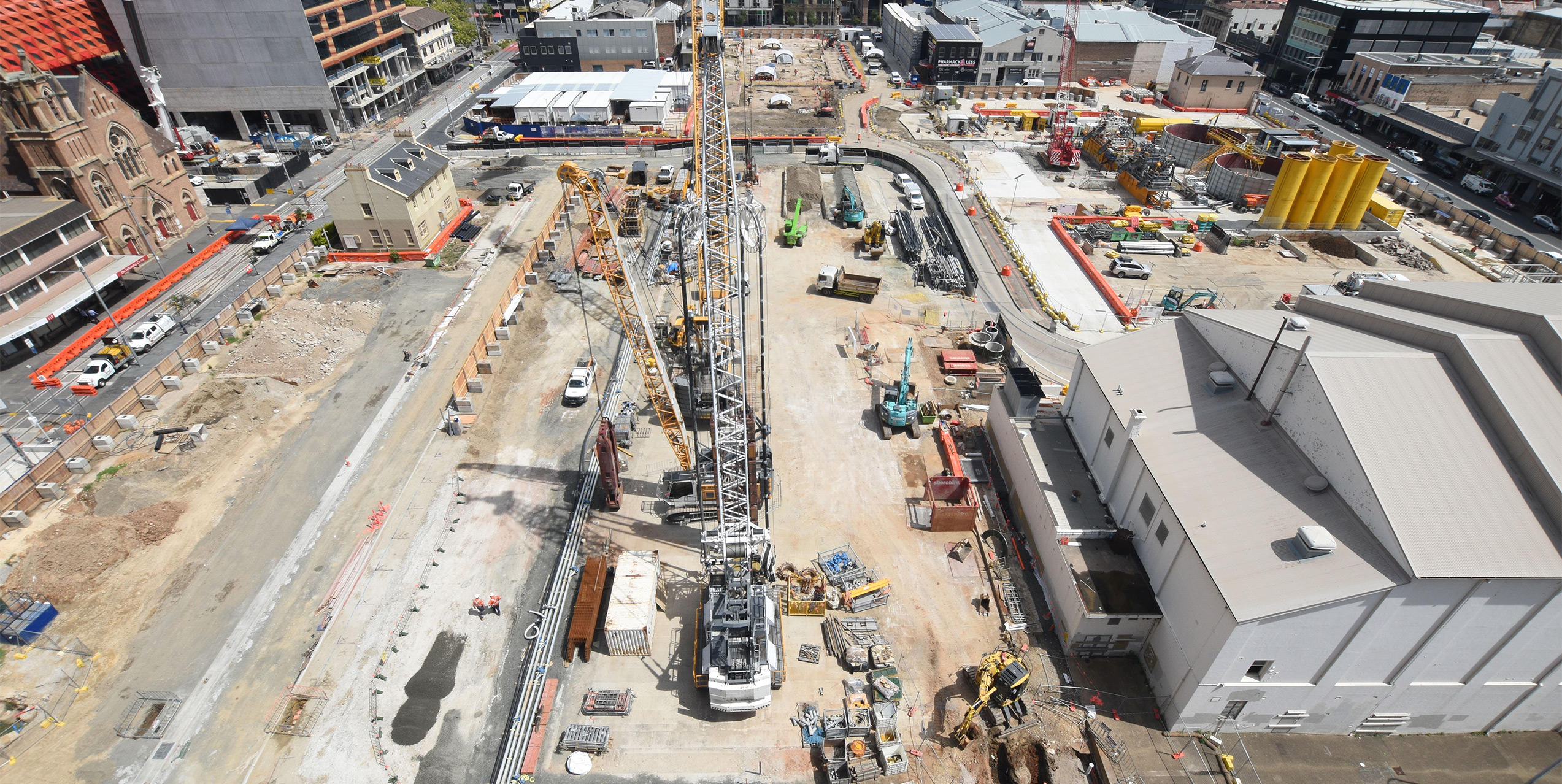



Improving community outcomes
A tunnelling system built underground, the WTP provides an overall benefit to the Parramatta City area, constructed with minimal impact to local communities and surface infrastructure. This streamlined metro network is supported by the Clyde Stabling and Maintenance Facility (SMF), which will serve as a base for Sydney Metro West to control the state-of-the-art driverless system. To create better connectivity, the team diverted an existing road alignment (via an overpass bridge) over the railway line entering the Clyde SMF area, minimising any traffic disruptions.
Alternative Tunnelling Alignment
The spur tunnel construction was positioned under an existing one-hundred-year-old sewer main at Clyde. By tunnelling underneath the pipeline, the Clyde Dive Structure will save approximately six months of construction time, as this solution does not require the current sewer system to be diverted to a new location.
Rigorous 3D structural analysis was completed to model the alignment of the existing sewer main and the spur tunnel. This technique identified the exact zone where the two components are likely to interact with each other. Following strict authority design guidelines, the design team has demonstrated that the spur tunnel can be constructed while ensuring impacts to the existing sewer will be kept within acceptable design limits.
Reduction in length of the Clyde Dive Structure
The geotechnical and structural team worked together to evaluate the ground conditions within the proposed dive structure location. The team reduced excavation volume, removed the need for tension piles and reduced the number of perimeter piles. They were able to conclude that the ground had enough strength capacity to change the dive structure configuration by removing the building at the front and building it on top. This change reduced the length of the structure by approximately 60 metres without any alignment change.
This reconfiguration was a substantial saving of material, which reduced the surface footprint for the tunnel-to-surface connection, improving the sustainability and construction results.
Permanent Solution for Temporary Works – Parramatta Station & Rosehill Facility
The team identified the opportunity to replace a temporary pile retention system with a Diaphragm wall as a permanent solution. This provided a reduction in concrete quantities and was a sustainability initiative to minimise the amount of materials that would be made redundant once the excavated station box was completed.




